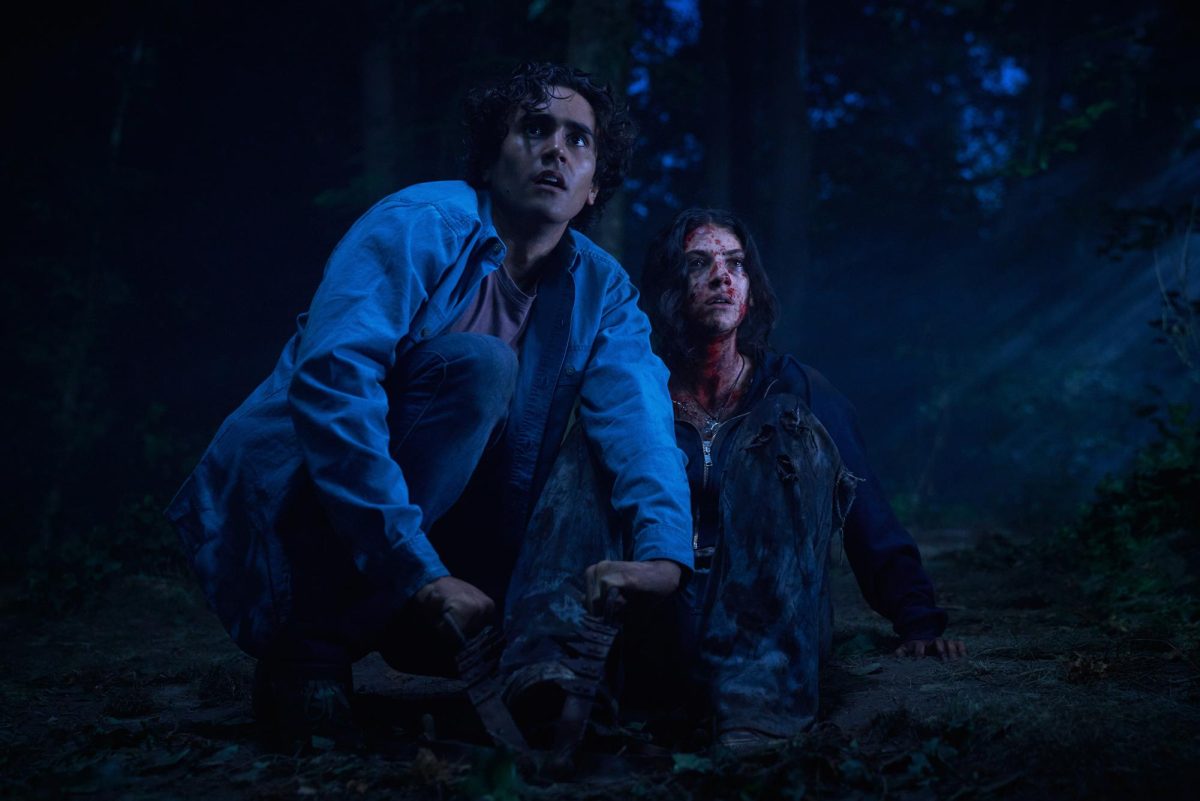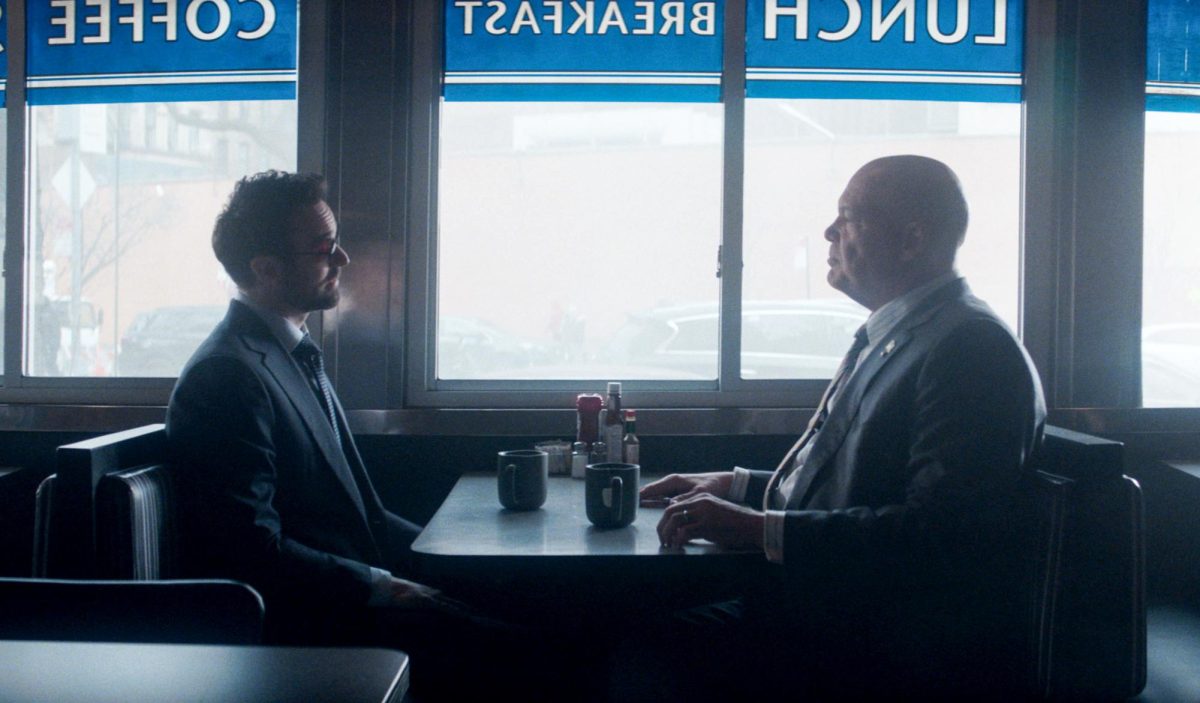Staged in a very intimate theater-in-the-round, warm, orange lighting illuminates the cement floor. Only a few grungy city accessories dot the stage, including a trash can, a wooden police barrier, a graffitied mailbox, some plastic crates and a memorial under a lamp post. This is the set for Ithaca College’s Main Stage Theater production of “Fires in the Mirror,” written by Anna Deavere Smith.
“Fires in the Mirror,” directed by Cynthia Henderson, is set in Crown Heights, Brooklyn, N.Y., in 1991 during the heartbreaking riots and racial disputes between the Orthodox Jews and the Afro-Caribbean community members. The play is composed entirely of monologues, told by Jewish and African-American members of the community: a rabbi, wife, husband and brother. They discuss topics and opinions around racial genocide, suffering and community hardships. It’s not entirely clear until the end that each scene and character are talking about a car accident where a 7-year-old African-American boy was killed by a drunk Jewish driver, which later led to the assault and death of another young Jewish man.
What’s interesting about “Fires in the Mirror” is its absence of using the fourth wall. The small space makes for a very personalized setting where the actors walk near, sit next to or, in the case of sophomore Jelani Pitcher’s portrayal of Rev. Al Sharpton, shake hands with people in the audience. The absence of this commonly administered barrier between the actors and audience allows for a deeper degree of empathy to emerge. In addition, the lack of the fourth wall complements the running theme of the play of breaking down the barriers.
In the midst of these devastating social quarrels, the actors do the characters justice. Each holds his or her own and are able to convey an immense passion, persuading the audience to listen to each side of every story told throughout the play. While listening, the audience realizes the racial disputes result from cultural differences between the black and Jewish communities and a lack of communication around the racially charged deaths of the two boys.
Senior Xavier Reyes, who plays Henry Rice, stands out among the generally strong cast, especially in a scene staged in a diner. There, he discusses some of the less commonly communicated graphic horrors of slavery as he stews over his steaming cup of coffee.
Differentiating between the actors when they switched roles was challenging, as there was little variation between the characters’ accents and mannerisms. Regardless, each actor sufficiently carried their distressing and absolutely horrifying stories with great theatrical ease, even though the material is not easy or pleasant to discuss.
“Fires in the Mirror” has a favorable and appropriate soundtrack that accommodates not only the characters, but the emotions of each scene craftily. Most of the music is hip-hop played in between the end of one monologue and beginning of another. Sound designer, senior Alexander Dietz-Kest, took great care to ensure each sound byte fit the character who walked on stage or that the lyrics complimented the previous scene. The most predominate case is when “I Got You (I Feel Good)” by James Brown comes on to introduce the exuberant Sharpton, while more traditional 90s rap played during a scene talking about street rap and def poetry. The music also sets the tone for the police reports revolving around the deaths. This adds a riveting and aural action to the play, which only makes the scene more compelling.
“Fires in the Mirror” successfully engages the audience and makes it look at the effects of racism and the struggles of miscommunication from a variety of backgrounds. This production encourages the audience to look at the world through different perspectives, with each subsequent monologue providing an authentic take and revealing that even if a situation appears to be one way, it often has many sides to the story.
Overall rating: Three out of four stars










